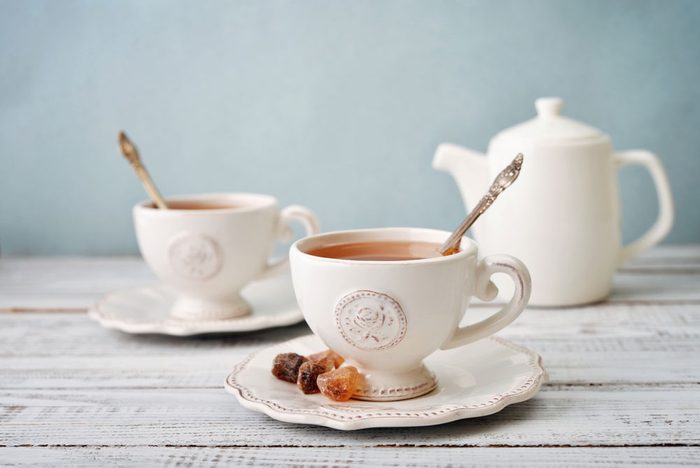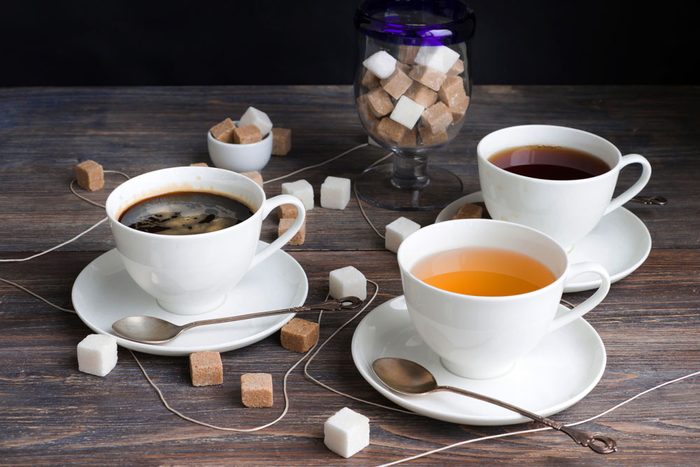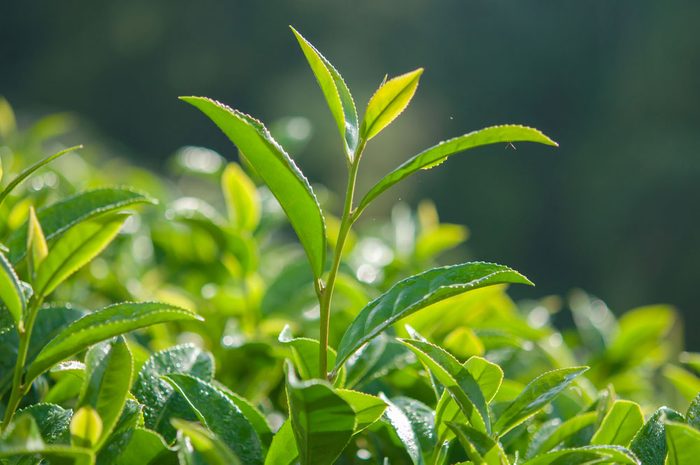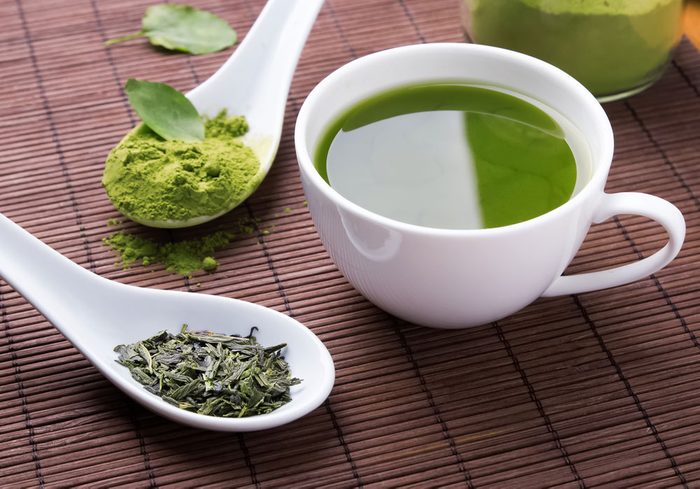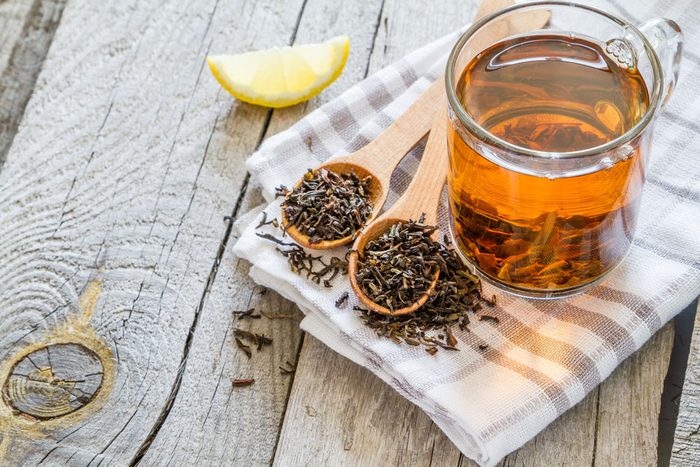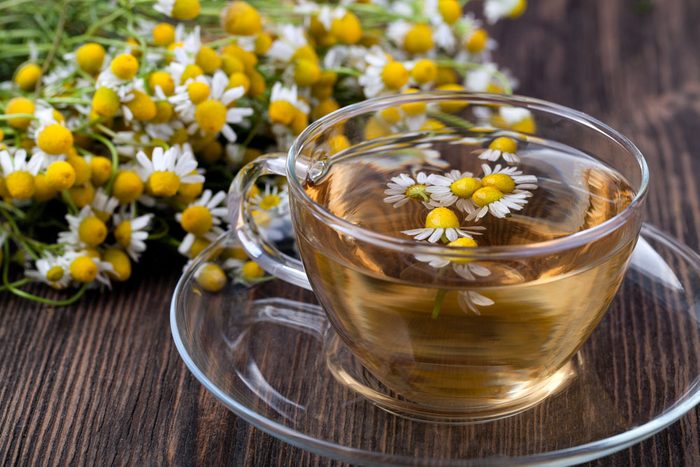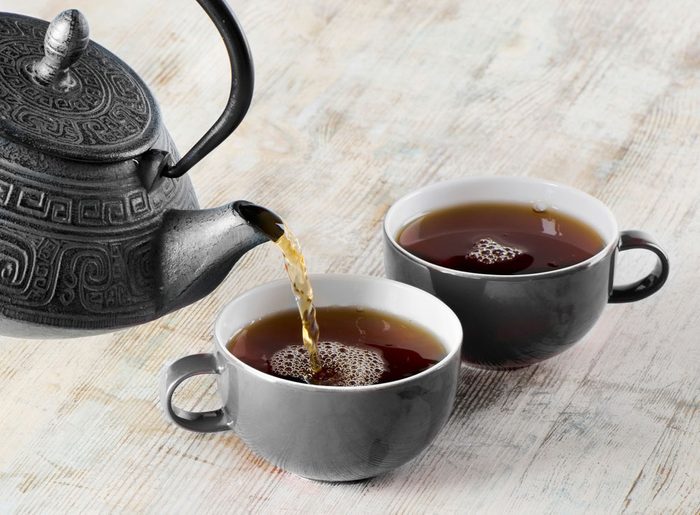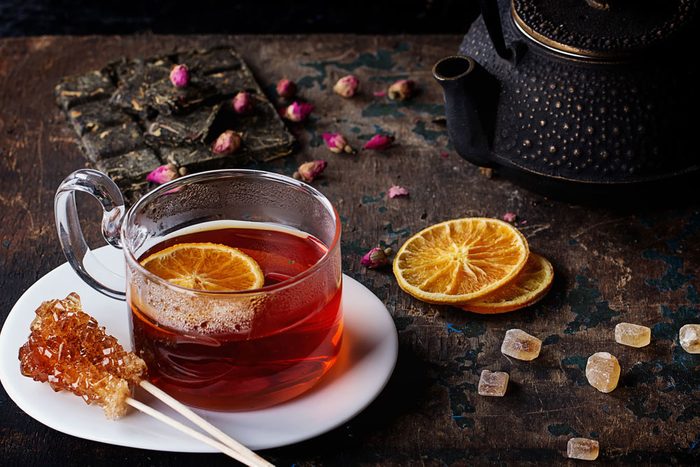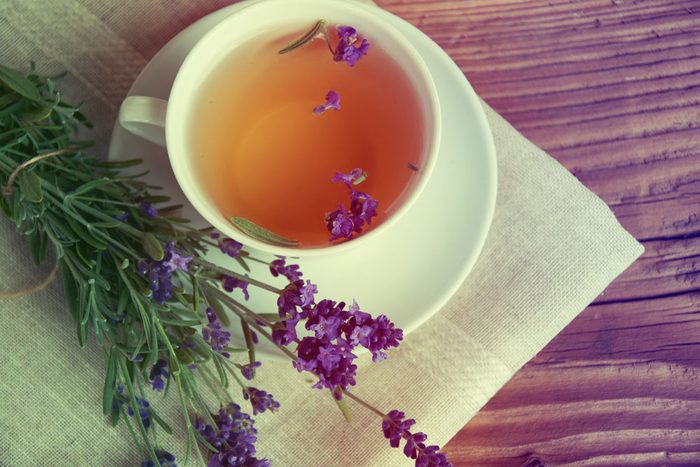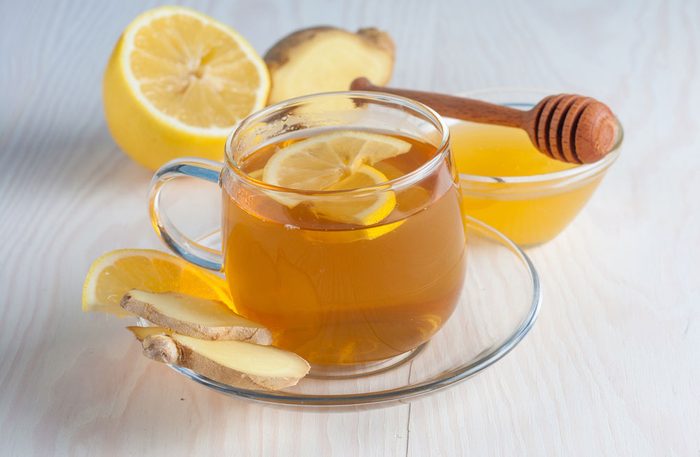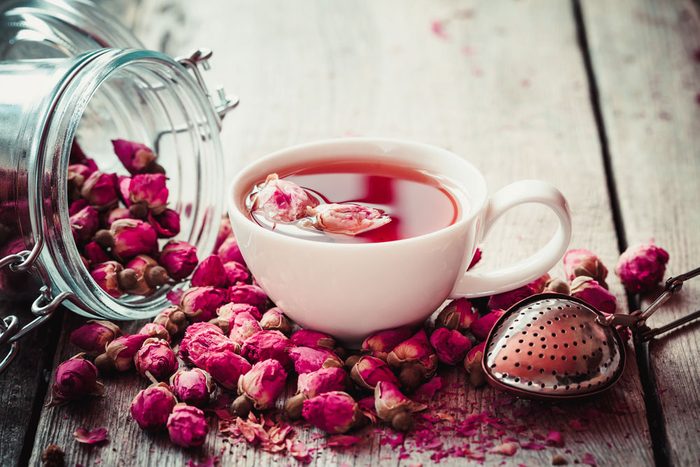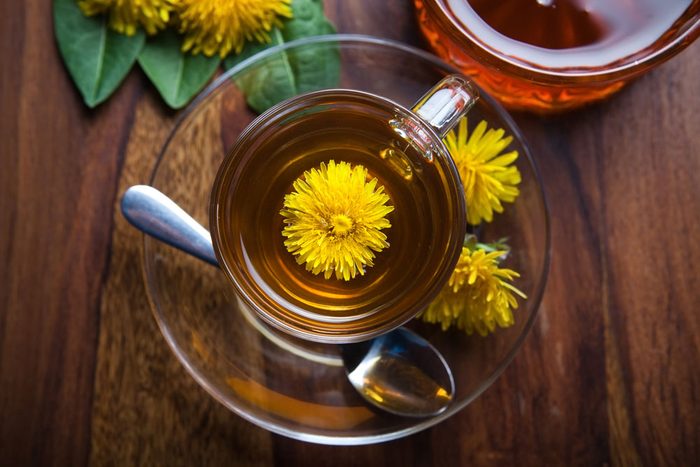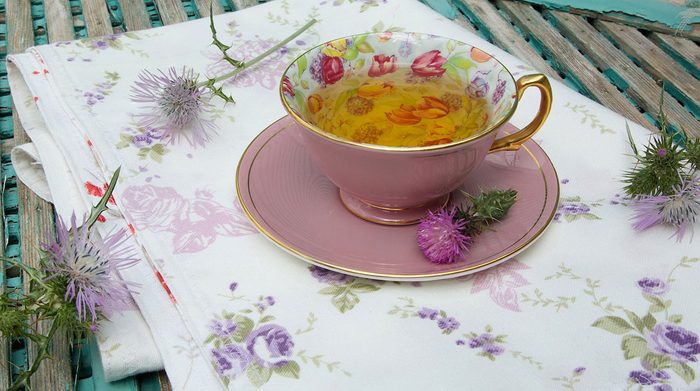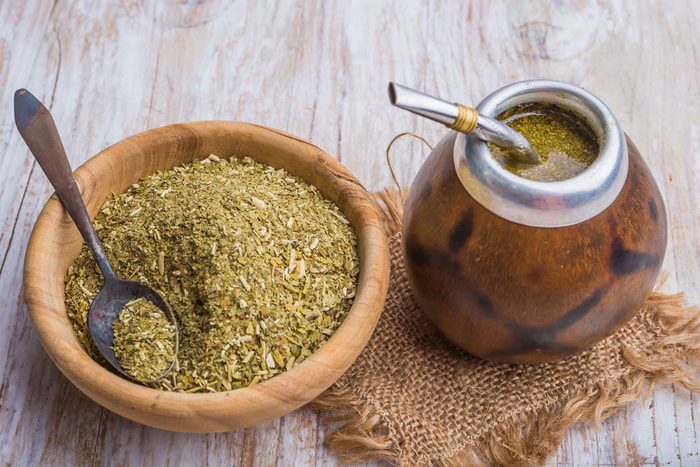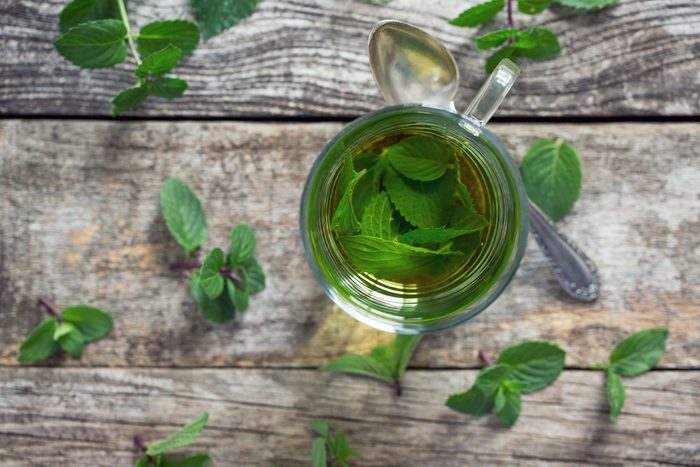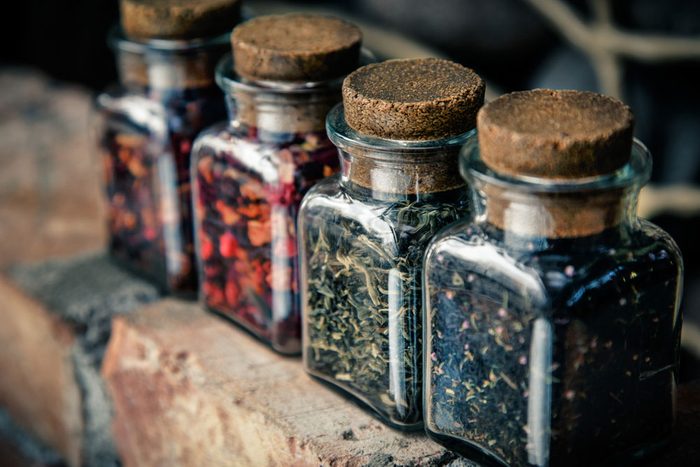Tea 101: A speedy primer
It seems like the types of tea on the market are unending, so what’s the difference between each one? According to Michelle Pierce Hamilton, registered holistic nutritionist, TAC tea sommelier and owner of beTeas Inc., all teas actually come from a single plant genus: the Camellia sinensis. The six categories are known as white, green, yellow, oolong, black (called red tea in China) and dark tea or puerh. While each is processed in a different way, all tea comes from the same plant, so they all have similar health benefits. Other herbal “teas” such as lavender, ginseng, chamomile and mint are more properly called tisanes and come from a variety of different plants, which means they have their own unique properties and health benefits.
Benefit 1: Unlike coffee, the caffeine in tea doesn’t cause energy spikes
Though both coffee and tea contain caffeine, tea releases the stimulant into our bodies at a slower pace because it contains the amino acid L-Theanine, which also produces a calming effect in addition to stimulating concentration and clear thinking. When it comes to coffee, “the caffeine immediately goes into our blood stream and our energy spikes,” says Pierce Hamilton. “Prolonged and excessive coffee consumption can cause strain on the adrenals, which affects our ability to handle stress.”
Benefit 2: Tea aids relaxation
No secret here, but Buddhist monks have long used tea for meditation, before the Camellia sinensis plant was ever analyzed for its ability to relax the body and mind. Drinking tea can actually ease your breathing and operates on the central nervous system to promote calm.
Tip: Explore your options
Though all tea comes from the same plant, there are many varietals because the plants are grown in various regions, which can alter the aroma and flavour of the tea leaves. Processing also affects the tea’s characteristics. There is an especially large range of oolongs, for example. “There are lightly oxidized oolongs that are very floral,” says Pierce Hamilton. “You can have longer oxidized oolongs that are roasted and nutty in flavour. And then there’s everything in between.”
Benefit 3: Tea is high in antioxidants
Though the actual type of antioxidants may vary from tea to tea, all teas have approximately the same number of antioxidants with free radical–fighting capabilities. These antioxidants reduce oxidation in the body (caused by environmental aggressors such as UV rays, pollution, cigarette smoke and pesticides) and combat the aging of our organs, including our skin!
Benefit 4: Green tea may fight cancer
Green teas, white teas and oolongs contain catechins, which are antioxidants that activate detoxification enzymes that may protect against the development of tumours. Other teas may have similar anti-cancer benefits, but haven’t been studied as extensively yet, says Pierce Hamilton. Try this recipe for Chicken and Green Tea Soup!
Benefit 5: Black tea promotes cardiovascular health
A study published in the European Journal of Clinical Nutrition found that dietary flavonoids, which are found in black tea, may reduce the risk of death from coronary heart disease.
Benefit 6: Chamomile prepares the body for sleep
Infusing water with chamomile can reduce anxiety, increase relaxation and encourage sleep because it acts as a mild nervous system sedative and reduces inflammation in the body, says Pierce Hamilton.
Tip: Steep it, steep it good
There are different philosophies about steeping in the east and west. “If you go to Asia, people generally use smaller vessels and more leaf and their steep times are very short—about 20 seconds. They sit for a very long time and do many infusions,” she says. “Western society is more impatient, fast paced and value driven. We tend to use larger vessels, less leaf and longer steep times so that we get a large quantity of tea.” In general, steep black teas, dark teas, oolongs and herbal teas longer and at a higher temperature and steep white and green teas at lower temperatures for shorter amounts of time.
Click here for some examples.
Benefit 7: Rooibos and honeybush are anti-inflammatory
Both from the cape of South Africa, rooibos and honeybush are rich in antioxidants and minerals such as magnesium, iron and calcium. Sip a rooibos or honeybush concoction to calm inflammation in the muscles and joints and to aid digestion.
Benefit 8: Lavender helps with migraines
If you suffer from headaches or migraines, try lavender to minimize pain, aid in relaxation, soothe the nervous system and combat insomnia. As a compress, lavender can also be used as a local anesthetic on cuts and bee stings.
Tip: Choose healthy milks and sweeteners
Sweetening tea is a time-honoured tradition in certain cultures, says Pierce Hamilton. But instead of using refined sugar, she suggests adding organic honey, maple syrup or stevia as a healthier alternative. When it comes to milk, Pierce Hamilton says that there is “evidence suggesting that the protein in dairy can bind to the antioxidants in tea and render them ineffective.” While more study is needed, she prefers to pour almond, cashew or coconut milk in place of dairy. Lemon is another possible addition that adds flavour and a dose of vitamin C, while aiding in the body’s natural detoxification process.
Benefit 9: Rose fruit and rose hip have high vitamin C content
With a higher level of vitamin C than citrus fruits, rose fruit (the orange seed pod on the top of the stem) and rose hip are perfect for fighting free radicals. Rose tisanes also a great cure during cold and flu season.
Benefit 10: Dandelion is an excellent liver tonic
Dandelion, one of Chinese medicine’s bitter herbs, activates enzymes in the liver to make it more effective at breaking down fats and carrying waste out of the body. The flower is often used in detoxifying blends and is high in vitamin A, which supports vision and organs such as the heart, lungs and kidneys.
Benefit 11: Bitter herbs may reduce sugar cravings
Bitter herbs such as milk thistle and dandelion—or basically any herb that has a bitter taste—promote detoxification and help reduce cravings for sugar and fat, says Pierce Hamilton.
Tip: Drink the tea you like best
Don’t just buy a tea because you heard it was healthy. Sure, green tea may have anti-cancer benefits, but it won’t do any good if it sits in your cupboard. “If you like a tea, you’re more likely to consume it,” says Pierce Hamilton.
Benefit 12: Some herbs—such as yerba mate—promote energy and vitality
Though any herb that detoxifies the body will help with energy levels, certain herbs such as ginseng and gynostemma (found in southern China, southern Korea and Japan) are extremely balancing and promote longevity. In South America, yerba mate is used to revitalize the body, even more so than coffee, says Pierce Hamilton.
Benefit 13: Peppermint fights colds and congestion
Dealing with a stuffy nose or phlegmy cough? Try sipping peppermint tea. On Pierce Hamilton’s website for beTeas Inc., where she mentions the therapeutic uses of a range of herbs, she states that peppermint tea is widely used to “ward off or lessen colds, chest congestion and nasal congestion.” You can also try peppermint tea to soothe nervous tension, stress, nausea and toothaches.
Tip: Use caution
Beware when using therapeutic or medicinal herbs, because they can cause unwanted side effects. For example, too much of an herb that stimulates detoxification can make you sick. When using herbal remedies, go to a certified blender and drink the tisane “within the context of a healthy eating plan, or with the support of a practitioner that understands the impact of herbal medicine in conjunction with your diet and lifestyle,” says Pierce Hamilton.
